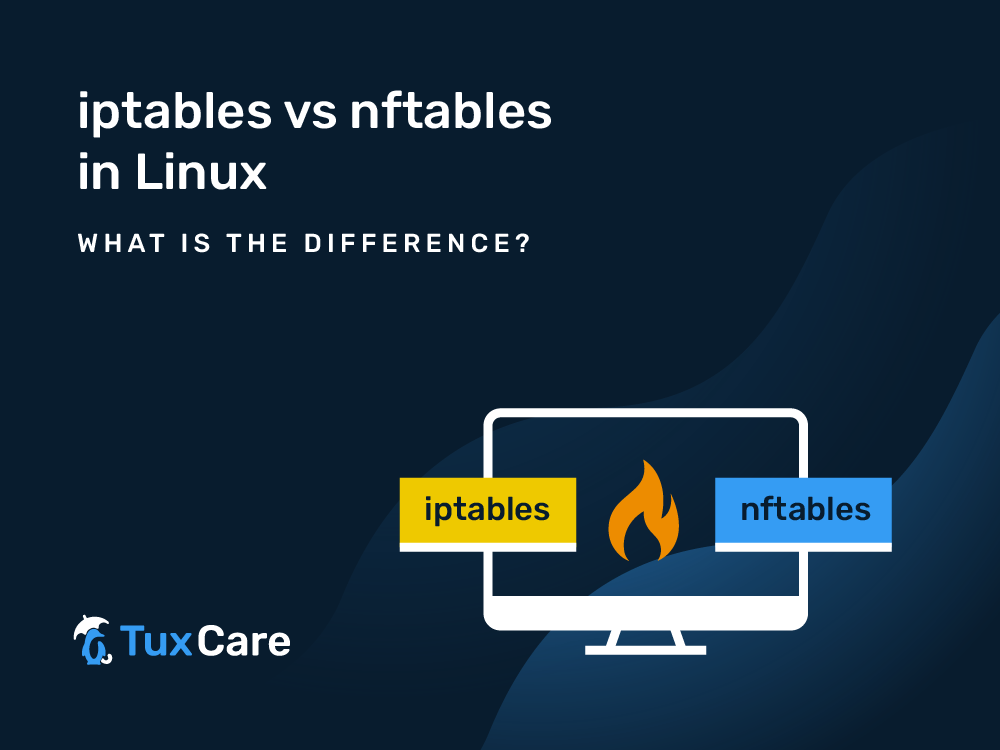iptables vs nftables in Linux: What is The Difference?
- nftables provides a simpler, more efficient alternative to iptables, with unified IPv4/IPv6 handling.
- Features like rule tracing and multi-action rules in nftables enhance network management.
- Transitioning to nftables offers better performance and simplicity, supported by tools like iptables-translate.
The ongoing evolution in Linux network packet filtering and firewall management, particularly highlighted in the iptables vs nftables debate, represents a pivotal shift in network security. Both iptables and nftables offer unique approaches to controlling and securing network traffic. This blog post will take a deep look into iptables vs nftables, highlighting their distinct features, differences, and practical applications in various network environments.
Understanding the Basics
Since its introduction in the late 1990s, iptables has been a core component of Linux firewall solutions, offering flexibility and robust control over network traffic. However, its complex syntax can be intimidating. In contrast, nftables, introduced with Linux kernel 3.13 in 2014, was designed to address some of the limitations seen in iptables. When examining iptables vs nftables, one finds that nftables streamlines packet filtering and classification, offering a more user-friendly syntax, improved performance, and better support for modern network protocols.
iptables vs nftables
The syntax and usability of iptables, known for its complexity and verbosity, often pose a steep learning curve, particularly for newcomers. The syntax for iptables options can be quite fragile in certain places. In some instances, a space can be placed after a comma, while in others, it cannot. Sometimes, swapping two options can be done without issue, but other times, it may lead to an error. This complexity particularly complicates testing when rules are generated by scripts.
Nftables addresses this challenge with a user-friendly syntax that simplifies rule writing and reduces the likelihood of errors, leading to better manageability.
For example, a typical iptables rule might look like this:
iptables -A INPUT -p tcp --dport 22 -j ACCEPT
This rule allows incoming SSH traffic on port 22.
In contrast, nftables, offers a more straightforward syntax, as seen in this equivalent nftables rule:
nft add rule ip filter input tcp dport 22 accept
Another point in the iptables vs nftables discussion is the handling of IPv4 and IPv6. With the prevalence of dual-stack configurations on servers, administrators often have to duplicate rules in two different config files. nftables overcomes this by integrating functionalities like IPv4, IPv6, arp, and inet into a single framework, enhancing performance and eliminating redundancy.
Furthermore, nftables allows a single rule to perform multiple actions. For instance, it can log and block packets from a specific network like 10.10.1.0/24 simultaneously, streamlining rule configurations and speeding up rule processing.
Rule Tracing in nftables
A common challenge in network management is identifying which rule is unexpectedly blocking traffic. nftables tackles this with a built-in tracing feature, a functionality that iptables lacks. For example, if there’s a rule blocking SSH traffic from a range like 10.10.1.0/24:
$ sudo nft insert rule inet filter input ip saddr 10.10.1.0/24 tcp dport 22 drop
And you’re troubleshooting blocked connections from 10.10.1.15, enabling tracing for this IP can pinpoint the problematic rule:
$ sudo nft insert rule inet filter input ip saddr 10.10.1.15 tcp dport 22 meta nftrace set 1
By running nft monitor trace, you can see the exact rule causing the blockage.
The introduction of this tracing feature in nftables significantly enhances the ability to debug complex rulesets, providing network administrators with a powerful tool for managing and troubleshooting network traffic.
Transitioning from iptables to nftables
Moving from iptables to nftables marks a shift towards more efficient network management. Tools like iptables-translate help convert iptables rules to the nftables format, bringing benefits like enhanced performance and simplicity. For example, transitioning a web server’s firewall rules from iptables to nftables might involve converting iptables rules that allow HTTP and HTTPS traffic:
iptables -P INPUT DROP iptables -P FORWARD DROP iptables -P OUTPUT ACCEPT iptables -A INPUT -p tcp --dport 80 -m conntrack --ctstate NEW,ESTABLISHED -j ACCEPT iptables -A INPUT -p tcp --dport 443 -m conntrack --ctstate NEW,ESTABLISHED -j ACCEPT iptables -A INPUT -i lo -j ACCEPT iptables -A INPUT -m conntrack --ctstate ESTABLISHED,RELATED -j ACCEPT
to nftables rules:
nft add rule ip filter input tcp dport 80 ct state new,established accept nft add rule ip filter input tcp dport 443 ct state new,established accept
After converting all the rules, the new nftables configuration would ensure the same level of security and traffic management as the previous iptables setup, but with the added benefits of nftables’ efficiency and simplicity.
Choosing the Right Tool
While iptables has long been a reliable tool, nftables emerges as a more efficient and future-ready solution. In the iptables vs nftables decision, the choice depends on specific needs and environments. iptables may still be favored in systems with legacy configurations, while nftables is often the preferred choice in new deployments for its performance and scalability.
In both scenarios, integrating TuxCare’s Linux security solutions will ensure that your firewall solutions are running on a secure, supported, and compliant Linux kernel.



 Documentation
Documentation Login
Login




